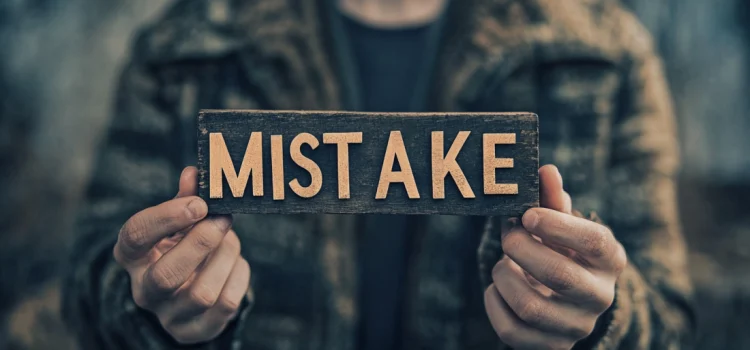

This article is an excerpt from the Shortform book guide to "Hidden Potential" by Adam Grant. Shortform has the world's best summaries and analyses of books you should be reading.
Like this article? Sign up for a free trial here.
Are you scared of making mistakes? What’s the upside of failing?
One kind of discomfort you must overcome to stay focused on your goals is making painful mistakes, argues Adam Grant. Perfecting a skill or achieving a goal requires learning from the mistakes you made to get there.
Check out how to learn from your mistakes without being too hard on yourself.
Making Mistakes
Most learners do whatever they can to avoid awkward, uncomfortable failures when acquiring a new skill. However, doing so sets them up for inevitable failure. Why? To learn anything, you have to practice it before you’re good at it. This is naturally uncomfortable and sometimes downright embarrassing, so most learners avoid this kind of practice. They prepare indefinitely or try to teach themselves solely through abstract theory, in hopes that they can become competent without trying and failing along the way.
Instead, Grant recommends learning how to learn from your mistakes. Put your skills into practice as soon as possible: The very first day you start learning how to do something, try your best to successfully do it. When you inevitably make mistakes, take each one as an opportunity to learn what you’re doing wrong. Make it a habit to expand the most uncomfortable parts of your training—the parts where you make the most mistakes—rather than minimize or avoid them. For example, if you’re learning how to draw and feel embarrassed because the faces and hands you draw always look bad, challenge yourself by drawing more faces and hands.
Additionally, the more mistakes you make and learn from, the more comfortable you’ll become with making further mistakes. If you can connect your feelings of discomfort to the knowledge that you’re making progress, you’ll discover that the effort you’re putting in is satisfying in itself, even if it continuously results in awkwardness and failure. This mindset is called learned industriousness.
(Shortform note: The term “learned industriousness” was coined by psychologist Robert Eisenberger in his 1992 paper Learned Industriousness. In this paper, Eisenberger elaborates that this learned industriousness effect can transfer across different types of tasks. If someone feels rewarded for putting in high effort in one domain, like schoolwork, they can transfer that feeling of satisfaction from high effort to other domains, like athletics or creative pursuits. That said, this intrinsic satisfaction transfers more strongly the more similar the two activities are.)
| The Most Uncomfortable (and Effective) Practice In Peak, Anders Ericsson agrees that the key to learning is practicing at a level beyond your current skillset from day one and making many mistakes. He elaborates that consistently stretching your limits like this triggers physiological changes in the brain: It adapts and improves in response to the challenges you give it. For those who are serious about improving, Ericsson prescribes a framework he calls “deliberate practice,” a stricter version of the learning process Grant describes. Deliberate practice involves following well-established training techniques, perfected over time, under the guidance of an experienced coach. Because it demands maximum effort, Ericsson asserts that deliberate practice can be even more unpleasant than self-guided practice. Despite this, he argues that this rigorous, systematic approach is necessary to build world-class expertise. |

———End of Preview———
Like what you just read? Read the rest of the world's best book summary and analysis of Adam Grant's "Hidden Potential" at Shortform.
Here's what you'll find in our full Hidden Potential summary:
- Why you should practice skills in a way that’s both fun and uncomfortable
- Three ways to tap into your potential by connecting with the right people
- What organizations can do to achieve more on a larger scale






